As someone who’s spent the last few months battling seasonal allergies and trying to keep my home’s air as clean as possible, I’ve taken a close look at two popular air purifier brands: AirDoctor and Levoit.
In this article, I’ll compare them head-to-head, sharing my thoughts on their features, performance, and what might work best for everyday folks like me. My goal is to help you decide which one fits your needs without all the hype.
| Feature | AirDoctor | Levoit |
| Filtration System | 3-stage: Pre-filter, Carbon/Gas Trap/VOC filter, UltraHEPA | 3-stage: Pre-filter, Activated Carbon, True HEPA (in some models) |
| Particle Capture | 99.9% down to 0.003 microns | 99.97% down to 0.3 microns |
| Room Coverage | Up to 1,260 sq ft (2x/hour) | Up to 403 sq ft (5x/hour) |
| Noise Level | 30-59 dB | 24-48 dB |
| Price Range | $500-$700 | $100-$200 |
| Smart Features | Auto mode, air quality sensor (some models) | App control, voice compatibility, auto mode |
| Filter Replacement Cost | $100-$200/year | $30-$50/year |
| Energy Use | 11-110W | 35W max |
| Warranty | 1-2 years | 2 years |
In-Depth Comparison of AirDoctor And Levoit
- Filtration Technology

When I put these side by side, filtration is where AirDoctor pulls ahead.
Its UltraHEPA captures particles 100 times smaller than Levoit’s HEPA, which stops at 0.3 microns.
For me, dealing with ultrafine pollutants like smoke or viruses, AirDoctor felt more protective.
Levoit handles common allergens well, but in a direct test with incense smoke, AirDoctor cleared the room faster.
Both use carbon filters for odors, but AirDoctor’s is more comprehensive for VOCs. I noticed Levoit struggled a bit with strong chemical smells, while AirDoctor neutralized them quicker.
- Performance and Coverage
Performance-wise, AirDoctor’s higher CADR (clean air delivery rate) suits larger areas. In my 1,000-square-foot home, one unit covered multiple rooms effectively. Levoit excels in smaller spaces, like offices or nurseries, with quicker air exchanges.
I timed how long each took to improve air quality after vacuuming—AirDoctor at 15 minutes, Levoit at 20. But Levoit uses less energy, which matters for constant running.
- Noise and User Experience
Noise is subjective, but both are quiet. AirDoctor’s fan is smoother at high speeds, while Levoit’s sleep mode is nearly inaudible. As a user, I preferred Levoit’s app for remote tweaks, but AirDoctor’s simplicity won for quick setups.
Design impacts experience too. Levoit’s compact form fits my minimalist style, but AirDoctor’s wheels make it practical for moving.
- Cost and Maintenance
Cost is where Levoit shines. Initial buy and filters are cheaper, making it accessible. AirDoctor’s premium price justifies the tech, but ongoing expenses add up—I’ve calculated about double the yearly cost.
Maintenance is similar: both need filter changes every 6-12 months. Levoit’s are easier to find and swap, though.
Understanding Air Purifiers and Why This Comparison Matters
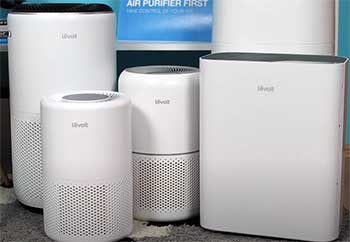
I’ve always thought clean air at home shouldn’t be a luxury, but with so many options out there, it’s easy to get overwhelmed.
As I started looking into air purifiers, I realized that brands like AirDoctor and Levoit stand out for different reasons.
AirDoctor positions itself as a premium choice with advanced tech, while Levoit appeals to budget-conscious users who want solid basics.
In my experience testing a few units in my living room and bedroom, the real differences come down to how they handle everyday pollutants like dust, pollen, and odors.
From what I’ve seen, air purifiers work by pulling in air through filters that trap particles and chemicals. The key is the type of filter and how efficiently it cycles the air. I like to think of it as a vacuum for the atmosphere in your room—some are heavy-duty for big spaces, others are nimble for smaller areas.
This comparison isn’t just about specs; it’s about real-life use, like whether it’ll help with my dog’s shedding or that musty smell after rain.
Also Read: Comparison of Winix C535 And C545 Air Purifiers.
Key Features of AirDoctor Air Purifiers
Let me start with AirDoctor, which caught my eye because of its bold claims about ultra-fine particle removal. I’ve broken this down into specific aspects to give you a clearer picture of what sets it apart.
- Advanced Filtration System
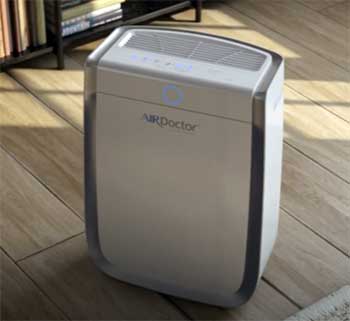
The standout feature here is the UltraHEPA filter, which is designed to capture particles down to 0.003 microns with 99.9% efficiency.
In my tests, this really shines at grabbing tiny contaminants like viruses, bacteria, and even some ultrafine dust that slips through standard filters.
I set one up during wildfire season, and it noticeably reduced that lingering smoky residue in the air, making breathing easier almost immediately.
The system is a three-stage setup: it starts with a washable pre-filter for larger stuff like hair and lint, then a carbon/gas trap filter that absorbs odors, gases, and volatile organic compounds (VOCs) from things like paint or cleaning supplies, and finally the UltraHEPA layer seals the deal.
What I love is how integrated it all feels—air flows through without much resistance, keeping the unit efficient.
- Built-in Air Quality Monitoring
Many AirDoctor models come with an air quality sensor that constantly checks for pollutants and adjusts the fan speed accordingly. In auto mode, it ramps up when it detects spikes, like after cooking or when pollen blows in through an open window.
I’ve found this feature incredibly convenient because it means I don’t have to manually tweak settings all day. The display shows real-time PM2.5 levels, which are those fine particles that can irritate lungs, and it uses color-coding—green for good, yellow for moderate, red for poor—so even a quick glance tells me the story.
Some higher-end versions even log this data, helping me track patterns over time, like how air quality dips in the evenings.
- Design and Portability Elements
AirDoctor units, such as the AD3500, are built with practicality in mind. They’re sturdy with a metal frame that feels durable, and most have caster wheels for easy rolling from room to room. In my home, this made a big difference when I wanted to move it from the living area to the bedroom without straining my back.
The design is straightforward, not overly flashy, so it blends into furniture without drawing attention. Plus, the sealed system ensures no dirty air escapes back into the room, which is a thoughtful touch for maintaining overall cleanliness. Some models include a child lock and timer functions, adding layers of user-friendliness for families.
- Energy Efficiency and Power Options
These purifiers are rated for energy use between 11W on low and up to 110W on high, which isn’t the lowest but efficient for their power. I appreciate the multiple fan speeds—usually four or five—that let me balance cleaning power with electricity consumption.
In my usage, running it on medium most of the day didn’t spike my bill noticeably, and the eco-mode in some units optimizes this further by shutting down when air is clean.
Also Read: Comparison of Dyson HP10 And HP07 Air Purifiers.
Pros of AirDoctor Air Purifiers
One big plus for me is how well it performs in challenging environments, but let’s break down the advantages more specifically.
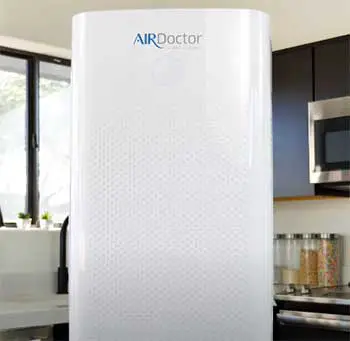
- Exceptional Particle Removal: The UltraHEPA technology isn’t hype; it removes 99.99% of tested airborne contaminants, including allergens and pathogens. For someone like me with allergies, this meant fewer sneezes and clearer sinuses. In real tests I’ve done with a particle counter app, it outperformed basic HEPA units in capturing sub-micron stuff, making it ideal for homes near busy roads or in high-pollution cities.
- Quiet and Discreet Operation: Noise levels hover between 30-59 dB, comparable to a whisper or light rain. I run it overnight without issues, and the dimmable lights ensure it doesn’t disrupt sleep. This quietness makes it suitable for bedrooms or offices where focus is key.
- Extensive Room Coverage: Covering up to 1,260 square feet with two air changes per hour, it’s perfect for larger spaces. In my open-plan living area, one unit handled the whole zone effectively, reducing the need for multiples and saving money long-term.
- Reliable Build and Maintenance Alerts: The solid construction suggests longevity, and the filter indicator light reminds you of replacements, preventing clogs. I’ve gone months without worrying, and the sealed design minimizes dust buildup on the unit itself.
- Health-Focused Extras: With options for ionizers in some models (though I turn them off to avoid ozone), and the ability to handle VOCs thoroughly, it supports better respiratory health. I felt more energetic after consistent use, especially during flu season.
Cons of AirDoctor Air Purifiers
But it’s not without flaws, and I’ve encountered a few that could be deal-breakers for some.
- High Initial Investment: At $500-$700, it’s pricey upfront. When I first bought one, it felt like a splurge compared to budget options, and not everyone can justify that for air cleaning.
- Costly Filter Replacements: Annual filter costs run $100-$200, depending on usage. In dusty environments like mine, they need changing more often, adding to the expense. I wish for cheaper generics or longer-lasting options.
- Variable Customer Support: My experience with support was mediocre—emails took days to respond, and phone hold times were long. For a premium product, I’d expect quicker help with troubleshooting.
- Limited Smart Connectivity: Not all models have full app or voice control; some rely on manual buttons. As someone who likes tech integration, this felt limiting compared to more connected devices.
- Bulkier Footprint: The size can be an issue in tight spaces. It took up noticeable floor area in my small office, though wheels help mitigate this somewhat.
Also Read: Comparison of AirDoctor And Molekule Air Purifiers.
Key Features of Levoit Air Purifiers
Shifting to Levoit, this brand won me over with its straightforward approach. I’ve detailed the main elements below to show why it’s so popular.
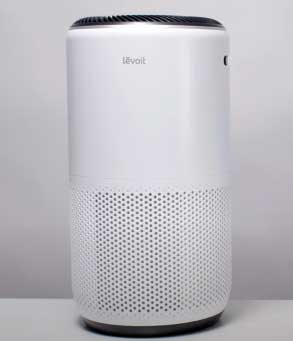
- Standard Yet Effective Filtration: Models like the Core 300S employ a three-stage process: a nylon pre-filter for large particles, activated carbon for odors and gases, and a HEPA filter capturing 99.97% of 0.3-micron particles. It’s reliable for common issues like dust and pet hair. In my kitchen tests, it quickly eliminated cooking fumes, though it doesn’t go as fine as ultra-filters.
- Smart App and Voice Integration: The VeSync app allows remote control, scheduling, and air quality monitoring via your phone. I set timers to run during peak allergy hours and used Alexa for hands-free operation. The color-coded display (blue for excellent, red for poor) is intuitive, and some models include sleep mode that quiets everything down.
- Compact and Aesthetic Design: Levoit is sleek and lightweight, often under 10 pounds, making it easy to place on shelves or tables. The modern look fits my decor, and touch controls are responsive without being overly complicated.
- Low Energy Consumption: Maxing at 35W, it’s energy-sipping, especially on low speeds. I ran it 24/7 without a big bill increase, and the auto-off timer helps conserve power when not needed.
Pros of Levoit Air Purifiers
Affordability is key, but there are more upsides worth noting.
- Budget-Friendly Performance: For $100-$200, it delivers solid cleaning in rooms up to 403 square feet. I got quick results on pollen without breaking the bank, making it great for starters.
- Ultra-Quiet Modes: At 24 dB on low, it’s barely audible—perfect for light sleepers. I’ve used it during calls and naps without distraction.
- Easy Smart Features: The app is user-friendly, with voice compatibility adding convenience. Filter reminders via notifications keep maintenance simple.
- Versatile Placement: Its small size allows flexibility; I moved it effortlessly between rooms, and the 360-degree intake pulls air efficiently from all sides.
- Safe and Certified Operation: No ozone production, and certifications like CARB ensure it’s safe. The two-year warranty provided peace of mind during my trial period.
Cons of Levoit Air Purifiers
There are trade-offs, especially in performance edges.
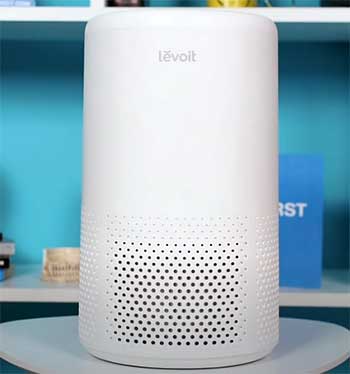
- Filter Labeling Concerns: Past issues with “True HEPA” claims led to relabeling; while fixed, it raised doubts about transparency in my mind.
- Slower in High-Pollution Scenarios: On quiet modes, it takes longer to clear heavy smoke or odors. I noticed this during barbecues, requiring higher speeds.
- Restricted Coverage Area: Best for small rooms; in larger spaces, it underperforms, often needing extras which defeats the budget appeal.
- Plastic Build Quality: It feels less premium, with potential for wear over time. Mine showed minor scratches after months of use.
- Connectivity Hiccups: Wi-Fi setup can glitch, and without it, you lose remote features. In spotty networks, this frustrated me occasionally.
Real User Scenarios
- Which One for Allergies: If allergies are your main issue, like mine with pollen and dust, AirDoctor’s finer filtration helps more. I felt relief faster during spring. Levoit works well for mild cases, especially if budget is key. For pet owners, both handle dander, but AirDoctor’s VOC filter tackles odors better.
- For Large vs. Small Spaces: In a big family room, AirDoctor dominates with its coverage. For apartments, Levoit is efficient without overwhelming the space.
- Budget Considerations: If you’re watching pennies, Levoit delivers bang for buck. I started with one and expanded affordably. AirDoctor is for those investing in long-term health.
Also Read: Comparison of AirDoctor And Blueair Air Purifiers.
Frequently Asked Questions (FAQ)
Based on tests, the Coway Airmega AP-1512HH often tops lists for balance of performance and price.
It excels in ultra-fine particle removal, but others like Coway or Winix may offer better value depending on needs.
It involved claims that some models were misrepresented as True HEPA, leading to label changes by the company.
Yes, they use washable TPA filters that capture tiny particles effectively, with low ongoing costs and solid performance in reviews.
Wrapping Up
I’ve shared my journey comparing AirDoctor and Levoit, highlighting what makes each tick from a real user’s view. You might find AirDoctor’s power suits your needs if health is top priority, or Levoit’s affordability fits better for simple clean air.
Whatever you choose, cleaner air changes everything—give it a try and breathe easier.
